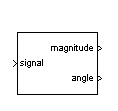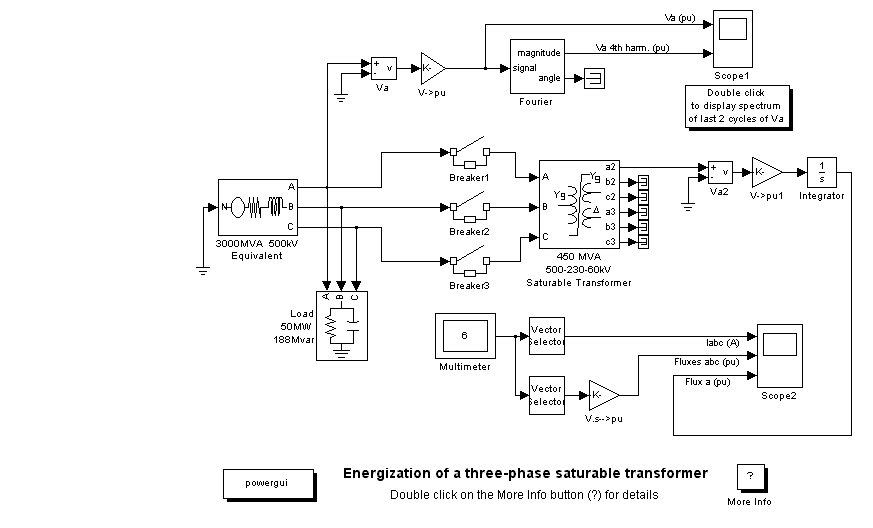

| SimPowerSystems |   |
Perform a Fourier analysis of a signal
Library
Description
The Fourier block performs a Fourier analysis of the input signal over a running window of one cycle of the fundamental frequency of the signal. The Fourier block can be programmed to calculate the magnitude and phase of the DC component, the fundamental, or any harmonic component of the input signal.
Recall that a signal f(t) can be expressed by a Fourier series of the form
where n represents the rank of the harmonics (n = 1 corresponds to the fundamental component). The magnitude and phase of the selected harmonic component are calculated by the following equations:
Dialog Box and Parameters
Inputs and Outputs
Example
The psbtransfosat.mdl demo shows the energization of a 450 MVA three-phase transformer on a 500 kV network. The power system is simulated by an equivalent circuit consisting of an inductive source having a short-circuit power of 3000 MVA and a parallel RC load.
The load capacitance is set to produce a resonance at 240 Hz (fourth harmonic). A Fourier block is used to measure the fourth harmonic content of phase A of the primary voltage.
The Fourier block measures a high level of the fourth harmonic in the voltage (on the second trace of Scope1) because of the fourth harmonic content of the current injected into the network resonating at that particular frequency (240 Hz).
 | Excitation System | Generic Power System Stabilizer |  |